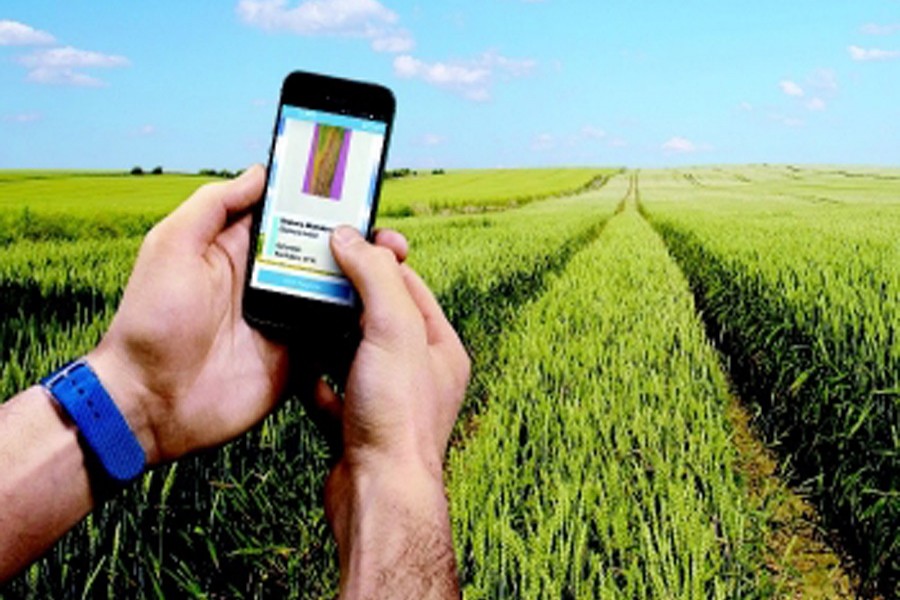The world can never escape poverty without financial inclusion, but connecting people in the backwater areas can make wonders, a leading tech entrepreneur has said.
"Two billion people have no access to credit," said David Davies, founder and chief executive officer of AgUnity of Australia. "There is huge growth potential."
Credit coupled with technological help can transform the lives of 1.8 billion people, who scrape by $2.50 a day, he said.
"This $50 phone is life changing for a farmer," he said, adding "challenge is to connect people in the most remote areas."
"Farmers need simple technology since they have never owned a technology …We can help build their own communities in the platform and build relevant technologies to make others connect with each other," Mr Davies said.
This was the key message of the three-day high-profile Asian Development Bank (ADB) event that wound up in Manila on Wednesday.
His comments came at a session dedicated to "Financing agripreneurs and rural SMEs" on the concluding day of the Rural Development and Food Security Forum.
Of two billion world people living at the bottom of the pyramid, more than 500 million are farmers who are deprived of the access to credit as well, Mr Davies said.
The situation exists even as an estimated 10 million non-government organisations are active worldwide.
But in India, technological innovation has been game-changing for its teeming farming population.
The agritech innovation ecosystem is taking off with more than 500 active agritech start-ups in India, trying to disrupt the conventional agricultural value chain, according to Hemendra Mathur, venture partner at Bharat Innovation Fund who also co-founded ThinkAg of India.
"This is unprecedented in the history of Indian agriculture with so many entrepreneurs mushrooming in a space of three to five years," he said as a panelist.
The solutions created by these innovative models have the ultimate objective of improving farm economics - which means more revenue, optimisation of cost and access to low-cost institutional credit for the farmers.
A few of these models are direct to farmers as the majority are directed to businesses who in turn work with farmers. Irrespective of the go-to-market business model, farmers are the key beneficiaries of such innovations.
One benefit, he said, is building market linkage for farmers by building demand-driven supply chains.
Conventional supply chains have five to eight intermediaries between the farmers and consumers, the new-age models have two to five.
Market linkages help farmers secure not only guaranteed income, but also strengthen their ability to borrow from institutional sources.
Another benefit is it enables farmers to get high-quality inputs at the right time and at the right price.
"These marketplaces are no vanilla market places. This is prescriptive selling where the start-ups recommend nutrition, seeds and agrochemicals on the basis of soil or crop and weather conditions," Mr Mathur said.
Also, the technology helps integrate timely and accurate data into supply chain by capturing data from satellites, drones, mobile phones and spectrometers and running proprietary algorithms to get some real time insights, which are valuable not only for the value chain players including food processing, agri output and input companies but also for the bankers and insurance companies.
Even more, innovative post-harvest solutions to reduce losses, improve food nutrition, traceability, fortification, development of alternative proteins are also picking up, which help farmers as well as end consumers.
He also underlined the need for incentivising and grooming women entrepreneurs to build innovative models for agriculture. There are few women entrepreneurs in the sector despite agriculture becoming more feminine.
Mr Mathur noted India saw green and white revolution in seventies and eighties and more recently in horticulture and animal protein sectors, which not only ensured food security but also helped millions of farmers climb out of poverty.
The next wave of revolution will be "digital agriculture", which he said can bring humongous benefits to farmers and make agriculture sustainable.
At the session, banks, venture capital firms, ICT and FinTech companies who have used successful models to serve rural areas shared their business models and success stories with more than 700 delegates at the Forum.
The gaps in public policies and regulatory frameworks have been identified and good practices have been showcased.
In another session with Asian farmers, panellists and discussants highlighted the predicaments of the farming community, grappling with debt burden, high production cost, lower price, limited access to inputs, know-how and technology.


